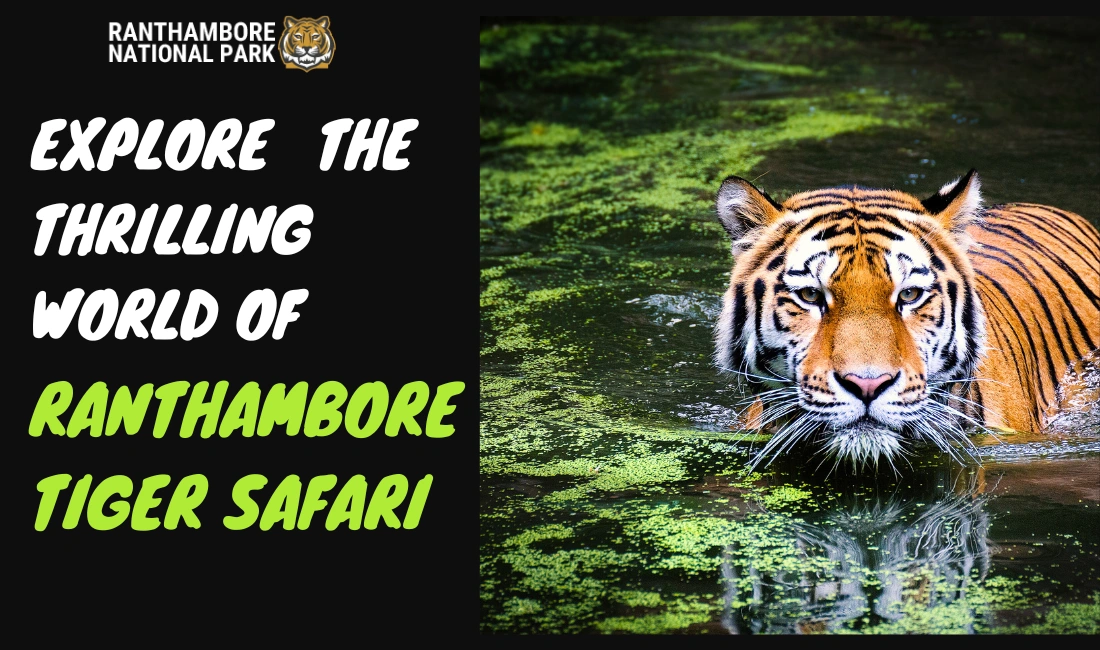Ranthambore National Park, located in the Sawai Madhopur district of Rajasthan, India, is one of the largest and most renowned national parks in Northern India. Spread over an area of 392 square kilometers, Ranthambore is famous for its rich biodiversity, majestic tigers, and ancient ruins.
Importance of Ranthambore Safari Zone
The park is divided into distinct Ranthambore safari zone, each offering unique landscapes, flora, and fauna. These zones are crucial in managing tourism and wildlife conservation within the park.
Overview of Zones 1 – 10
Ranthambore National Park is divided into ten Ranthambore safari zone, with Zones 1-5 designated as core zones and Zones 6-10 as buffer zones.
Zone 1, accessible via Singh Dwar, serves as a buffer zone and is frequented by tigers like T-39 and T-57. Notably, Noor (T-39) and her cubs have attracted attention to this area, along with other locations like Tuti ka Nalla, Amreshwar Dang, Sultanpur, Peela Pani, and Gada Dub.
Zone 2 records the highest number of sightings, featuring watering holes and tigers such as T19, T22, T72, T57, T28, T60, and T39. Locations like Jogi Mahal, Phuta Kot, Phuta Bandha, Lahpur Tiraha, and Nal Ghati are notable for leopard sightings.
Zone 3 offers sightings at High Point, Raj Bagh, Mandook, Jogi Mahal, and Padam Talab, particularly featuring T-19 and T-28 near Padam Talab.
Zone 4, once home to the famous tigress Machli, is rich in hiding spots and hosts tigers like T-28, T-64, T-19, T-75, T-41, and T-25, with significant locations including Singh Dwar, Malik Talab, Lakkad Da, Adidaant, Lambi, Tamakhan, and Berda.
Zone 5 shares similarities with Zone 4 in terms of sightings and key locations such as Singhdwar, Anatpur, Jokha, Dhakda, Kachida, Baghda, and Bakola, where tigers like T-25, T-28, T-17, T-74, and T-75 have been spotted.
Zones 6 to 10 were added later and can be accessed from a different entrance.
Zone 6, known as Kundal, shares boundaries with Zone 1 and offers sightings of T-39 and her pups, along with landscapes distinct from Zones 1 to 5.
Zone 7, though fewer in points, has sightings of big cats at Chidikho, Jamoda, Kushalipura, and Rajbagh Naka, including T-8 and T-34.
Similarly, Zone 8 hosts tigers T-8 and T-34 in locations like Balas, Kherai, Kali, Neemli Dang, Bhat, and Mahakho.
Zone 9, situated by the Chakal River, houses aggressive male T-42 (Fateh) and T-59, along with aquatic birds, sloth bears, and caracals.
Zone 10 offers tiger sightings near Aantri, Kushalipura, Bodal, Halonda, and Banskhori, featuring T-13, T-42, and T-43, alongside various bird species.
Wildlife Diversity in Different Zones
Ranthambore National Park is home to a diverse range of wildlife, including tigers, leopards, sloth bears, crocodiles, and over 300 species of birds. Each zone offers a unique opportunity to observe different species in their natural habitat.
Safari Experience and Tips
Visitors to Ranthambore can explore the park through jeep safaris and canter safaris, accompanied by experienced guides. It’s essential to book safari tickets in advance, especially during peak seasons, to secure a spot and enhance the chances of wildlife sightings.
Conservation Efforts in Ranthambore
Ranthambore National Park has been at the forefront of tiger conservation efforts in India. The park authorities, along with various conservation organizations, work tirelessly to protect the park’s fragile ecosystem and ensure the survival of its iconic tiger population.
Best Time to Visit Ranthambore National Park
The best time to visit Ranthambore is from October to June when the park remains open for visitors. However, the ideal time for tiger sightings is during the dry season, from March to May, when vegetation is sparse, and water sources are limited, forcing wildlife to gather around water bodies.
Accommodation Options Near Ranthambore
There are numerous accommodation options available near Ranthambore National Park, ranging from luxury resorts to budget guesthouses. Visitors can choose accommodations based on their preferences and budget, ensuring a comfortable stay during their wildlife expedition.
Popular Attractions Nearby
Apart from wildlife safaris, Ranthambore offers various other attractions, including Ranthambore Fort, a UNESCO World Heritage Site, and the picturesque Surwal Lake, ideal for birdwatching and nature walks.
Safety Guidelines for Visitors
While exploring Ranthambore National Park, it’s crucial to adhere to safety guidelines provided by park authorities. Visitors should maintain a safe distance from wildlife, refrain from littering, and follow the instructions of their guides at all times.
Sustainable Tourism Practices
Promoting sustainable tourism practices is essential for preserving the natural beauty and biodiversity of Ranthambore National Park. Visitors are encouraged to minimize their ecological footprint by opting for eco-friendly accommodations, conserving water and energy, and supporting local communities.
Recent Developments and Upcoming Projects
Ranthambore National Park continues to evolve with ongoing conservation initiatives and infrastructure development projects aimed at enhancing the visitor experience while ensuring the protection of its wildlife and natural habitats.
Testimonials from Visitors
Visitors to Ranthambore National Park often share their memorable experiences and close encounters with wildlife. Many describe the thrill of spotting a tiger in the wild as a once-in-a-lifetime experience that leaves a lasting impression.
Conclusion
Ranthambore National Park stands as a testament to India’s rich natural heritage and its commitment to wildlife conservation. With its breathtaking landscapes, diverse wildlife, and immersive safari experiences, Ranthambore remains a top destination for nature lovers and wildlife enthusiasts worldwide.




